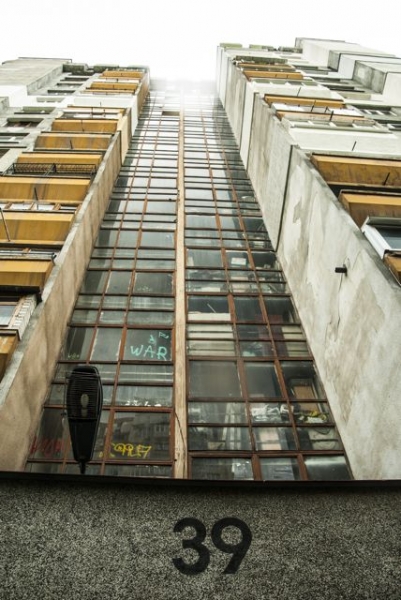Pictures - the author
Concrete panel blocks of flats are constructed from reinforced steel elements and the durability of the overall construction depends on the quality and durability of input materials. The same applies to any building with a reinforced steel skeleton frame. The joints between the panels are most vulnerable elements. With most systems they can easily be checked and reinforced if necessary, but in order to prolong the life of a concrete panel building it is essential to protect it from humidity, for example, moisture from the atmosphere, leaks from the water-supply pipes. Even an ill-considered replacement of old wooden window and door frames with new tightly fitting ones might have an adverse effect, if renovation activities are not conducted simultaneously. Another factor which shortens the ‘life’ of concrete panel constructions relates to the unlawful reconstruction and conversion of the building construction. Passportisation of buildings may identify similar problems, yet much of this unauthorized repair activity will remain hidden until some major earthquake hits and causes easily visible damage as a result of the spoilt construction.
There are concrete panel blocks of flats in Sofia, which were built more than fifty years ago and cause much trouble to their residents. In your opinion, what should be the approach to resolving a problem which is expected to become increasingly relevant in Bulgaria?
The focus should be not on concrete panel constructions, but on the maintenance of buildings in general. Bulgarians must be aware that all buildings need to be maintained, whatever materials they were built from, therefore resources must regularly be allocated to that purpose. Perhaps in many of these ‘dangerous’ blocks of flats, there is no good neighbourhood spirit, no active supervision on joint parts, and probably no funds are put aside for capital repairs. In such circumstances, any building will become dangerous not only to its residents.
Do you know how that problem is dealt with in the other countries of the former Eastern bloc?
I will give you an example with the town of Pirna in east Germany, where several sections of a concrete panel block of flats were demolished in order to regulate the market of public rental housing. The land has been rehabilitated and converted into a park. This is a good model for having fewer buildings in a concrete panel complex. Another solution is to remove several blocks of flats or to reduce the number of floors in the remaining blocks. As a result, housing units become smaller which gives a different quality to residing in them.
How do you see the future of concrete panel housing complexes in Bulgaria?
It would be impossible to discuss the future of concrete panel buildings outside the context of neighbourhoods and towns. I would recommend the following trends and principles in order to improve the quality of residence in concrete panel housing complexes:
Further develop their infrastructure and landscape architecture. Even the boring design of a concrete panel block will look better if it is part of some good-looking environment with maintained roads, sidewalks, parks, etc. Many of the concrete panel buildings have been surrounded by mud and pools ever since they were first built.
Improve the cultural infrastructure of concrete panel housing complexes. Quality of residence does not refer to the place of residence only. It is also influenced by the presence or absence of a number of different parameters. It is of crucial importance that each separate neighbourhood or complex has its parks, sports facilities, schools, community culture centres, and entertainment clubs. This would dramatically change their current appearance of ‘town bedrooms’.
Easy access and road infrastructure are major requirements, too. Good transport connections between concrete panel complexes and the rest of a town or city will have a significant positive impact on the quality of residence there.
And last but not least, one of the best opportunities to make the most of the biggest potential of these neighbourhoods, space, is to develop urban agriculture. There are plenty of examples in Europe and around the world that a large part of abandoned or overgrown meadows can be converted into beautiful gardens with just a little effort on behalf of municipalities and citizens.

Which is the better alternative for Bulgarian citizens – concrete panel buildings or new construction, and why?